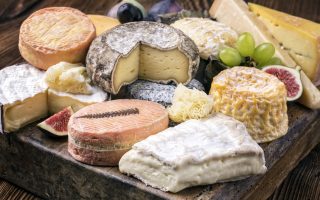Growing Olives in the South of France
Case Study

What struck me immediately on my first visit to Languedoc was the common nature of olive trees – they grow in gardens, they grow on pavements, they grow in front of supermarkets, they grow in the middle of roundabouts. An item that comes with a price label in the UK is as common as a hydrangea shrub might be in that colder climate.
So, I ask myself, how do they get from tree to table? And can I pick the olives in my own garden?
The Languedoc-Roussillon region is famed for its olives and olive oil which form an essential ingredient in the local cuisine. There are purported to be 490 000 olive trees in the Gard and 19 olive mills in the department, in comparison to only six just 10 years ago. This is due to the promotion of olive oil at Brussels level. The region contributes 45% of the national production of table olives and is the second producer nationally of olive oil.
A new centre has opened in Marguerittes just outside Nîmes: La Maison des Garrigues et des Terroirs de l’Olivier contains an exhibition which explains the process of extracting oil from olives, the role of olives in the cuisine of the area both in ancient times and today, the different varieties of olive and where they grow. There is no website yet, but it can be found just on the main roundabout at the entrance to the town on the N86.
All olives are green to begin with, and turn black as they mature. The olive tree flowers in May and by July the fruit are large and the inner nut hardened. The oil develops in August. From September harvesting of the green varieties begins – the Lucques and the Salonenque. In October the Picholine is harvested for use directly in the kitchen. At the beginning of November the fruit begins to turn yellow, and then darkening shades of red. At this stage the olive is harvested for the first olive oil. From mid November growth stops and the fruit is black. Harvesting of some varieties continues until January.
Stages of Oil extraction
1. Removal of leaves and washing
2. Crushing and kneading. The olives are crushed together with their nuts, using millstones or metallic stones, then kneaded. This leaves a paste, but the solid parts of the fruit still have to be separated from the oil and the water contained in the flesh.
3. Pressing. The paste is spread on a pile of trays (scourtins) made of vegetable fibre or nylon, and then pressed. The mixture of oil and vegetable juice is squeezed out. This is often carried out by centrifuge in modern mills.
4. Decanting. The oil rises to the surface, being denser than the water. The process of removing the oil is very slow and is often now carried by centrifuge.
5. Storage. The oil is labelled and stored in full vats away from light or heat to avoid oxygenation.
Did you know…
… how many olives you need to produce 1 litre of olive oil? 5 – 7 kg
… what percentage of an olive is made up of oil? 20%
…at what stage of maturity an olive produces most oil? When it is black.
What happens to the by-products of oil production?
The paste residue and vegetable juice are used as organic fertiliser, especially in olive groves. But research is being carried out into its potential as domestic heating fuel.
Do you know your olive variety and where it is grown?
Green olives:
Lucques: Hérault, Aude, Pyrenées-Orientales
Picholine: Gard, Bouches-du-Rhône, Hérault, Aude
Solonenque: Bouches-du-Rhône
Black olives:
Tanche: Drôme, Vaucluse
Cailletier: Alpes-Maritimes
Grossane: Bouches-du-Rhône
How are olives prepared for eating?
Green olives are very bitter. At least 24 hours after harvesting, they are soaked in water with a small amount of powdered soda to remove the bitterness. Then they are rinsed twice for four hours at a time, or for 8 – 12 hours, until the water is clear. At this point the olives can be stored in brine for 5 – 10 days. They are then ready to be eaten, and can be kept in the brine or be pasteurised. Herbs and garlic are often added at this stage.
The four departments of the Languedoc-Roussillon produce almost 700 tonnes of olive oil a year, comprising 17% of French production. The Gard was awarded the Appellation d’Origine Controlée (AOC) label for quality in 2004 for its olive oil, and is currently applying for recognition of its table olives under the name “Olives de Nîmes”.
Helen Jennings
Share to: Facebook Twitter LinkedIn Email
More in alpes, aude, centre, events, garden, heating, Removals
By Gemma Driver
Leave a reply
Your email address will not be published. Required fields are marked *




REPLY